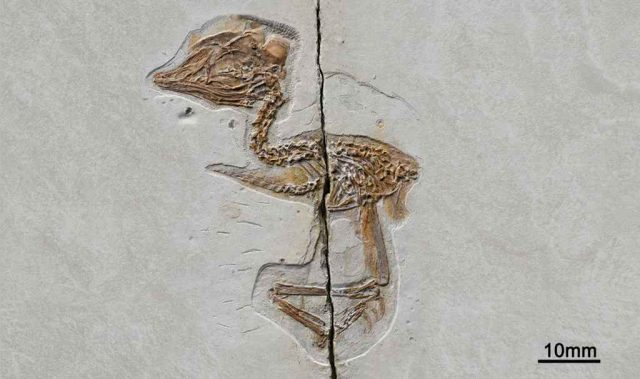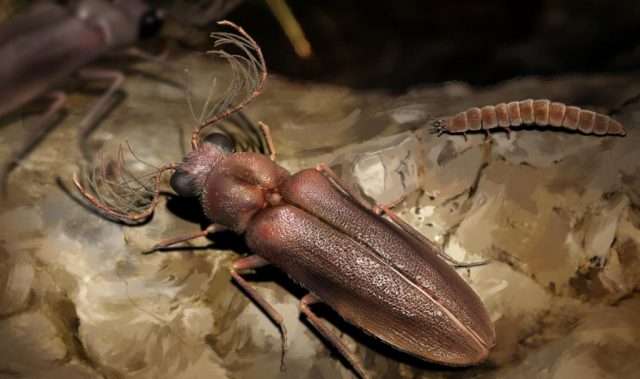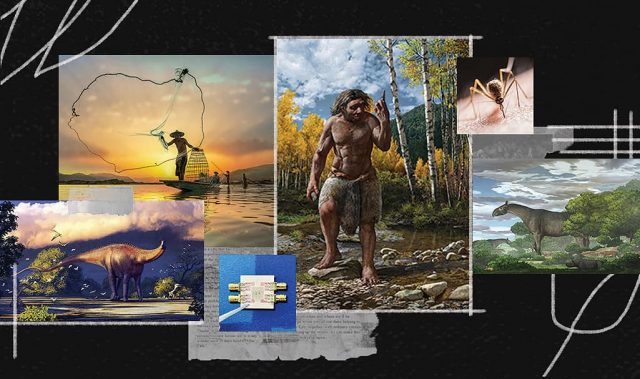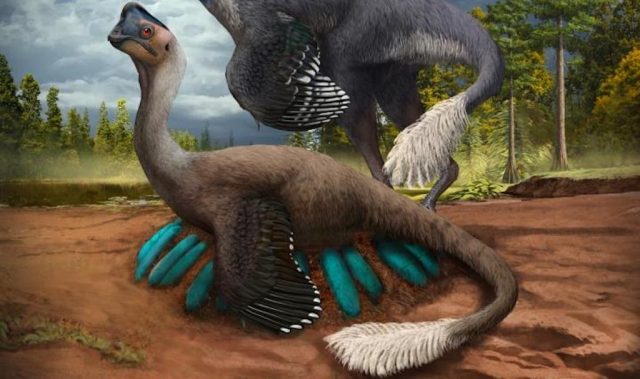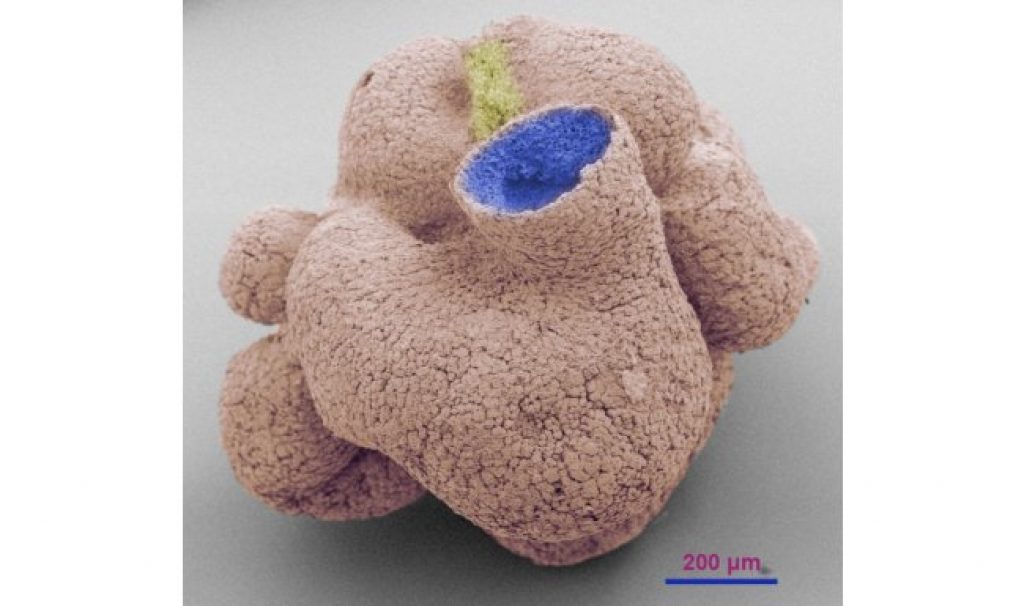
AsianScientist (Mar. 20, 2015) – In a study published in the Proceedings of the National Academy of Sciences, researchers have described a 600 million-year-old fossil with sponge-like characteristics that predates the Cambrian period by 60 million years.
Phylogenetic studies have suggested that sponges and eumetazoan animals may have shared a common ancestor more than 200 million years before the onset of the Cambrian period 541 million years ago, although unequivocal fossil evidence of such an ancestor is scant.
Professor Zhu Maoyan and colleagues from the Nanjing Institute of Geology and Palaeontology, Chinese Academy of Sciences analyzed a well-preserved 600 million-year-old fossil displaying multiple characteristics of modern sponges.
Flat tile-like features on the external surface, punctuated with small pores, resemble structures known as pinacocytes on modern sponges. The researchers report that the inner surface is covered with a regular pattern of uniform pits, with many pits surrounded by collars, similar to sponge cells called choanocytes.
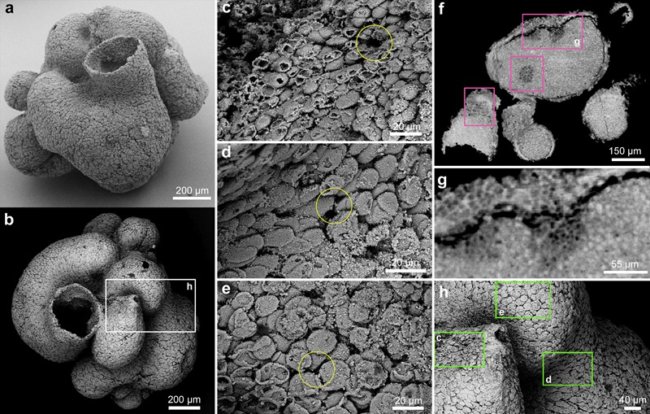
Discovery of additional specimen would confirm that the fossil represents a Precambrian sponge, yet features of the fossil are consistent with sponge anatomy, including a basal anchor similar to a sponge holdfast and orifices for water inflow and outflow. The results suggest that advanced forms of sponges were likely extant 60 million years before the Cambrian period, and that fossils of similarly advanced eumetazoans may yet lie in the fossil record.
The article can be found at: Yin et al. (2015) Sponge Grade Body Fossil with Cellular Resolution Dating 60 Myr before the Cambrian.
—–
Source: Chinese Academy of Sciences.
Disclaimer: This article does not necessarily reflect the views of AsianScientist or its staff.




